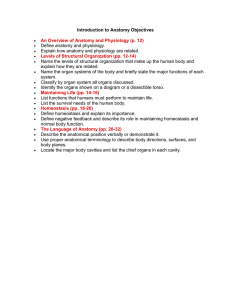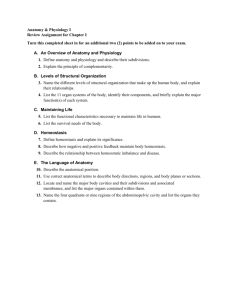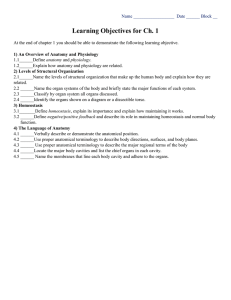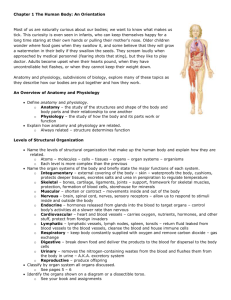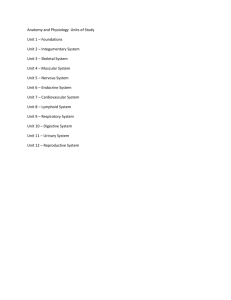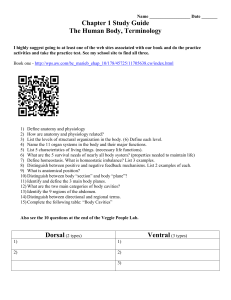Chapter 1 Notes
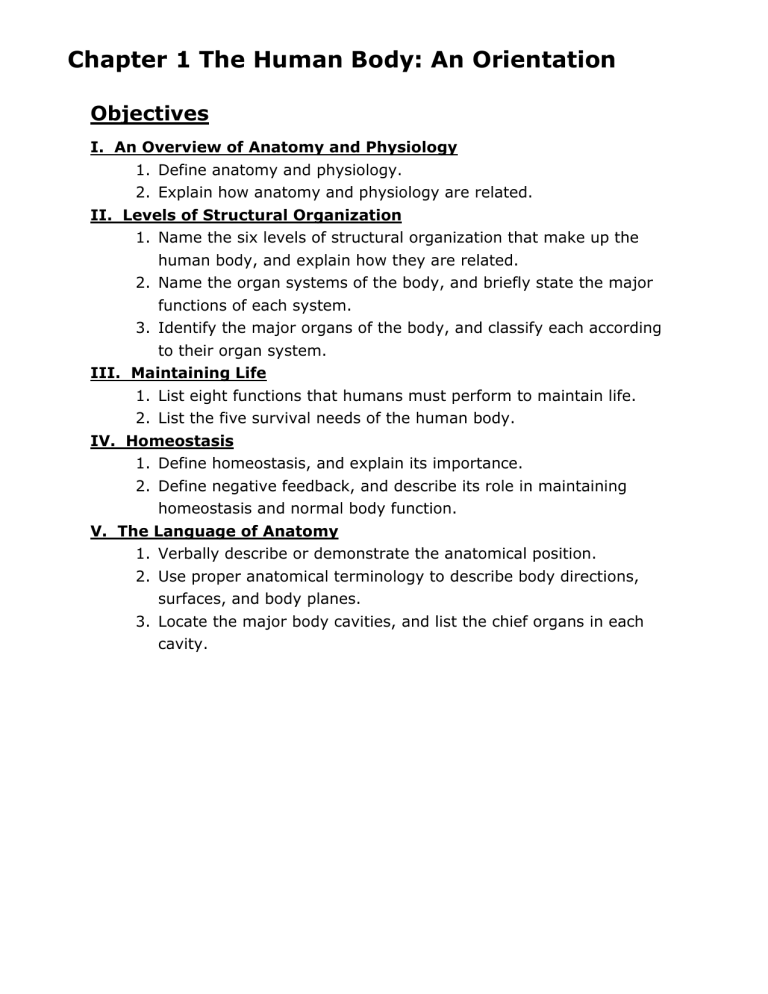
Chapter 1 The Human Body: An Orientation
Objectives
I. An Overview of Anatomy and Physiology
1.
Define anatomy and physiology.
2.
Explain how anatomy and physiology are related.
II. Levels of Structural Organization
1.
Name the six levels of structural organization that make up the human body, and explain how they are related.
2.
Name the organ systems of the body, and briefly state the major functions of each system.
3.
Identify the major organs of the body, and classify each according to their organ system.
III. Maintaining Life
1.
List eight functions that humans must perform to maintain life.
2.
List the five survival needs of the human body.
IV. Homeostasis
1.
Define homeostasis, and explain its importance.
2.
Define negative feedback, and describe its role in maintaining homeostasis and normal body function.
V. The Language of Anatomy
1.
Verbally describe or demonstrate the anatomical position.
2.
Use proper anatomical terminology to describe body directions, surfaces, and body planes.
3.
Locate the major body cavities, and list the chief organs in each cavity.
Chapter 1 The Human Body: An Orientation
An Overview of Anatomy and Physiology (pp. 1-2)
Anatomy (pg. 1)
Physiology (pg. 2)
Relationship between Anatomy and Physiology (pg. 2)
Chapter 1 The Human Body: An Orientation
Levels of Structural Organization (pp. 2-7)
From Atoms to Organisms (pg. 2-3)
Level of Organization
Name
1
2
Description
3
4
5
6
Organ System Overview (pg. 3-7)
Organ System Major
Organs/Structures
Integumentary
System
Skeletal System
Muscular System
Nervous System
Endocrine System
Cardiovascular
System
Lymphatic
System
Respiratory
System
Digestive System
Urinary System
Major Functions
Male Reproductive
System
Female
Reproductive
System
Chapter 1 The Human Body: An Orientation
Maintaining Life (pp. 7-12)
Necessary Life Functions (pg. 7-9)
Survival Needs (pg. 9-12)
Chapter 1 The Human Body: An Orientation
Homeostasis (pp. 12-14)
Chapter 1 The Human Body: An Orientation
The Language of Anatomy (pp. 14-21)
Directional Terms (pp. 14-15)
Directional
Term
Definition and 2 examples
Superior
Diagram
Inferior
Anterior
Posterior
Medial
Lateral
Intermediate
Proximal
Distal
Superficial
Deep
Regional Terms (pp. 14-17)
Body Planes and Sections (pp. 17-18)
Body Cavities (pp. 18-21)


